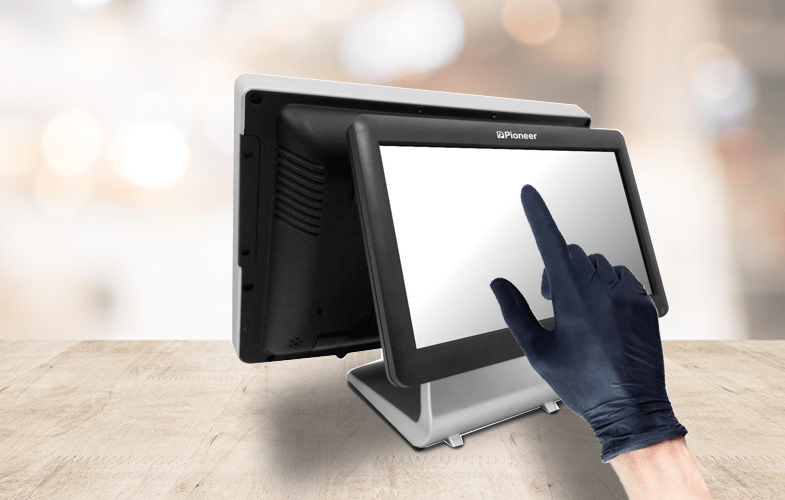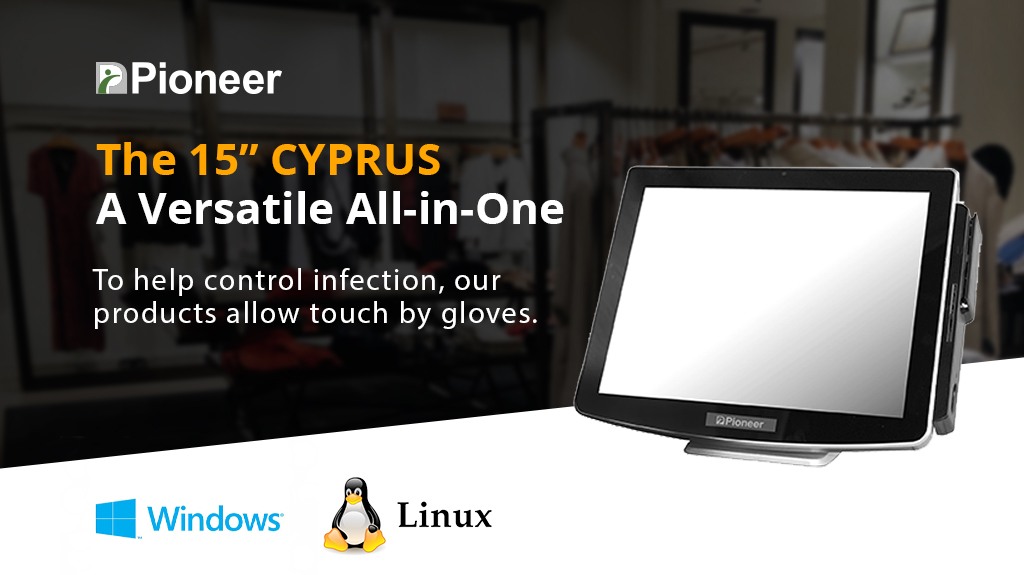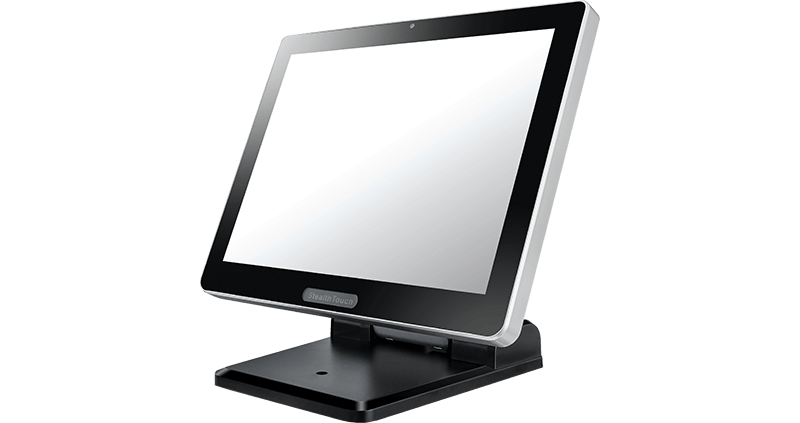The Importance of Glove Compatibility for Touchscreen Solutions
Date Posted: September 17, 2021 / Category: Insights News | Market:

The spread of COVID-19 has caused many people to rethink their daily lives and how they keep their technology clean. This is especially true for objects that receive a large number of daily touches, such as point-of-sale (POS) hardware. Since it can be challenging to keep POS devices clean throughout the day, wearing gloves seems to be a logical alternative to using harsh chemicals that may ruin displays or pin pads.
As the demand for gloves has increased amongst healthcare professionals and frontline workers worldwide, as well as in retail environments such as grocery stores and shopping centers, a major question comes to mind. Is your POS technology compatible with gloves?
While the urgency to provide glove-compatible touchscreens seems high, millions of retail and healthcare organizations still lack glove-compatible touchscreens in their offices and stores. The first step for changing the trend is educating POS users on what constitutes touchscreen compatibility.
How Touchscreens Work
Most of us are familiar with touchscreens. We use this technology daily with our phones, computers, at the ATM, and even out to eat at restaurants now that many of them have implemented touch display ordering. Although we’re constantly tapping and swiping on our screens all day long, very few of us have probably ever wondered what it takes for touchscreens to work. There are two common touchscreens that we typically interact with: resistive and capacitive.
Resistive
Resistive touchscreens do precisely what their name implies. They “resist” your touch, and as you press harder on their screens, you may even be able to feel them bend slightly. This is because the screen is made up of two electrically conductive layers. When your finger hits the screen, the two layers get pressed together, and the electrical current changes. At this point, the software recognizes a change in the current at these coordinates and carries out the function that corresponds with that spot.
Capacitive
Capacitive touchscreens are the style we interact with the most, and unlike resistive touchscreens, they don’t use the pressure of your finger to create a change of flow of electricity. Instead, they are compatible with anything that holds an electrical charge. So as your finger or another object touches the screen, an electrical charge is transferred to create a voltage drop on that point of the screen. The software then processes the location of the voltage drop and carries out the function that corresponds with that spot.
What Gloves Work on What Touchscreens?
A big question when selecting gloves today is touchscreen compatibility. However, understanding what constitutes touchscreen compatibility is not straightforward, and there is more to it than just the glove. Because resistive touchscreens only need a local pressure point to initiate a signal, it doesn’t matter whether you’re wearing gloves or not. Disposable gloves and thinner coated seamless knit gloves work best on capacitive touchscreens because they have a higher level of conductivity that can influence screen functionality and responsiveness.
What Solutions are Currently Available?
Pioneer is dedicated to addressing this issue throughout the United States, especially when equipping healthcare personnel and other businesses with the technology they need to operate safely. Our integrated/embedded touchscreen solutions are designed to withstand harsh and demanding environments, protect against liquid spills, withstand millions of touches, and are glove-compatible.
Pioneer’s 15″ CYPRUS is one example of a touchscreen that allows touch by gloves. It is a versatile solution, making it the perfect design for retail and hospitality environments of all kinds. It can be configured to meet your application requirements and budget and can run as a thin client on a solid-state disk (SSD) or support more complex applications under Windows or Linux. Plus, every CYPRUS’s screen is protected against liquid spills and lasts millions of touches.
For more information about our glove-compatible touchscreen solutions or Pioneer in general, don’t hesitate to get in touch with our team here.
About Pioneer Solution Inc.
Founded in 1994, Pioneer is headquartered in California with offices in Asia and distributors worldwide. We focus on designing and supplying integrated/embedded touchscreen solutions for multiple vertical markets, including healthcare, hospitality, retail, and industrial. Our products are designed to have a long shelf life (a minimum of 5 years) and serviceability (a minimum of 7 years). With our extensive engineering background, we can also work with our customers in designing a custom product from start until production, which may involve custom molding, system board engineering, laboratory or agency approval, assembly, and production. This expertise has resulted in numerous high-profile OEM projects.





